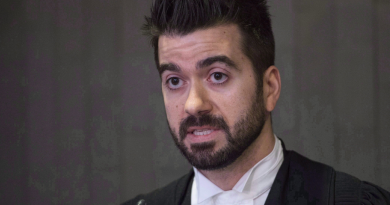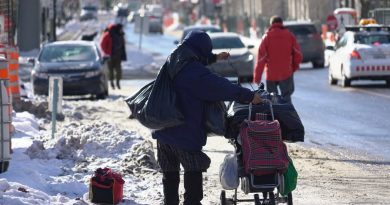Heat stress that caused Alaska salmon deaths a sign of things to come, scientist warns
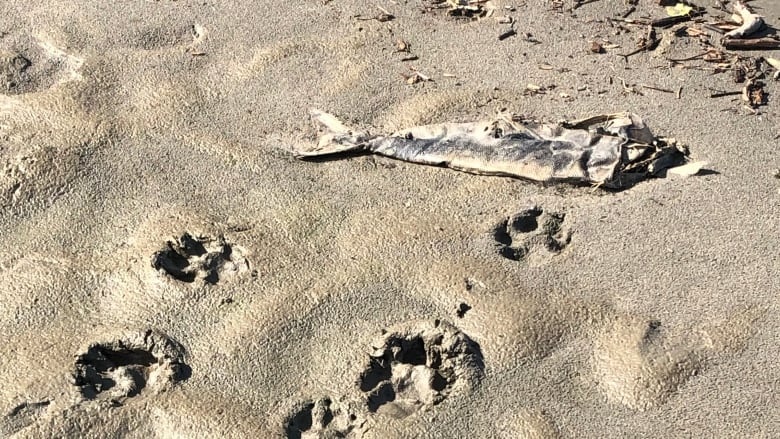
Scientists believe heat stress killed thousands of salmon in an Alaskan river last month.
From July 7 to 11, communities along the Koyukuk River experienced sustained air temperatures of over 30 C, well above the seasonal average highs of less than 20 C.
Shortly after the heat wave, locals began reporting an unusual number of dead chum salmon washing up on the banks of the river.
Lisa Bifelt is Athabascan and lives in the village of Huslia in interior Alaska, almost 600 kilometres northwest of Anchorage on the Koyukuk River. She grew up on the land and relies on subsistence hunting to support her family.
“You’d see dead fish now and then, but I don’t ever remember seeing this many,” she said.
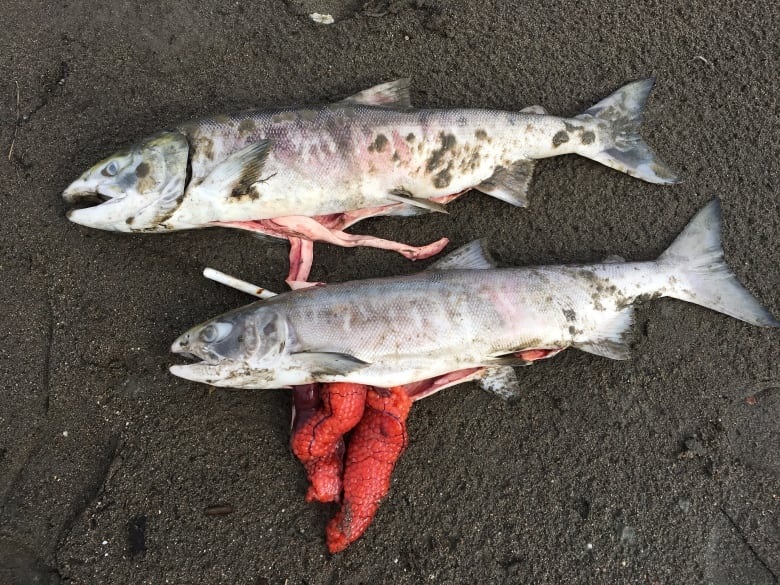
She said she saw a post on Facebook from the Yukon River Inter-Tribal Fish Commission asking for volunteers in the villages of Allakaket, Alatna, Hughes, Huslia, Koyukuk and Nulato to survey and take photos of the dead chum salmon. The villages are all along the Koyukuk River except for Nulato, which is slightly south, just past where the Koyukuk meets the Yukon River.
“There was a lot when we actually stopped and started counting them,” Bifelt said.
“All of them had the eggs still perfectly in the sack, not even loose or anything.”
Finding salmon dead before they have spawned is unusual.
Survey by volunteers
Chum salmon are one of the largest species of salmon, second only to chinook salmon. They hatch in freshwater streams and rivers then migrate out to the Pacific Ocean to feed and grow before returning to the same freshwater streams to spawn, then eventually die.
According to the National Oceanic and Atmospheric Administration’s fisheries department, there were hundreds of stocks of chum salmon in Alaska in 2018, and while some stocks were below target population levels, none were listed under the Endangered Species Act.
Bifelt reported her findings to Stephanie Quinn-Davidson, a former fisheries biologist and director of the Yukon River Inter-Tribal Fish Commission, which advocates for stronger tribal representation in management decisions when it comes to fisheries.
Quinn-Davidson determined the results of the volunteers’ surveys were sufficiently alarming to send a team of scientists more than 300 kilometres by boat from Hughes to Huslia to investigate.
Watch as a team from the Yukon River Inter-Tribal Fish Commission explores the salmon die-off along the Koyukuk River.
She said when the team began travelling downriver from Hughes, they almost immediately began seeing dead salmon. The fish were examined for tumours, lesions, infections, parasites, worms — anything that would indicate disease.
“Based on our observations, these salmon were perfectly healthy,” she said.
“Every single salmon we observed had not yet spawned.”
She said they tried to rule out as many causes as possible. Since the die-off coincided with a heat wave, the team determined heat stress was the culprit.
She said when salmon enter a river to travel to their spawning grounds, they stop feeding. They only have their built-up fat stores as energy.
When fish are exposed to warmer temperatures, their metabolism increases and they go through their energy stores much faster. The salmon that died didn’t have enough energy to make it to their spawning grounds and their hearts failed, she said.
The team recorded 850 dead fish, but they estimate the actual number of casualties could be up to 10 times higher.
No impact on overall population
Quinn-Davidson said dead salmon were also reported in mid-July to the south on the Kuskokwim River and in Bristol Bay.
Many chum salmon made it to their spawning grounds this year and it’s not expected the deaths will have a drastic impact on the overall population. But there are concerns that if heat waves become more common, so will salmon die-offs.
Athabascan communities on the river fish for multiple species for sustenance but worry that a decrease in chum will upset the natural cycle.
Ricko DeWilde, an Athabascan from Huslia who is on the National Geographic television show Life Below Zero, isn’t convinced heat is to blame for the salmon deaths.
DeWilde said he started noticing dead salmon while boating from Fairbanks to Huslia in mid-July.
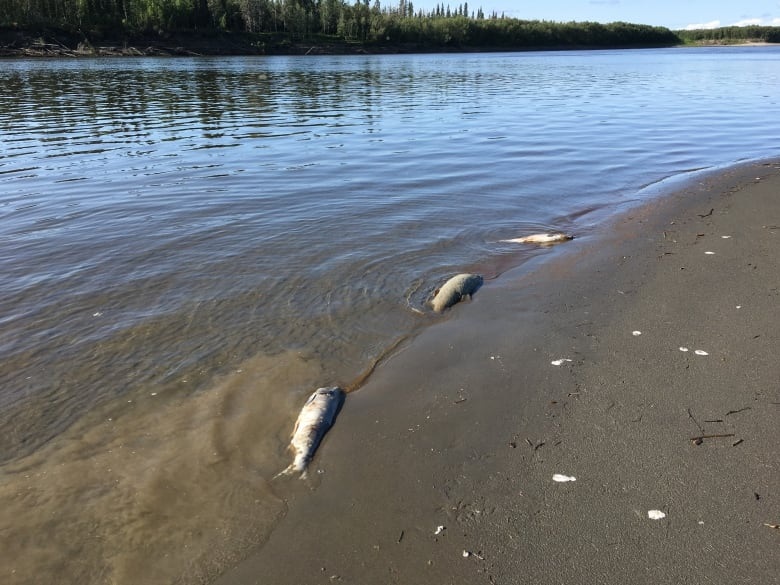
“When I got to Huslia I talked to some elders and they said, ‘Yes, that’s weird. That shouldn’t happen. That’s never happened before.'”
He said animals weren’t feeding on the fish, which concerned him because his community relies on fish and other animals for food.
Scientists investigating the deaths also observed that the fish did not appear to have been eaten, but noted that most animals would prefer not to eat something that was rotting.
DeWilde said he’s not totally convinced the cause of death was heat because the scientists didn’t take samples of the fish to be examined in a lab.
The scientists said the purpose of their investigation was to document, not to take samples.
DeWilde believes it’s worth exploring whether bacteria from the ocean or radiation from the nuclear accident in Fukushima, Japan, in 2011, could be affecting the salmon.
‘It will happen again’
The die-off appeared to only affect chum salmon, not other fish species, which raised concern and confusion among local communities.
Peter Westley, an assistant professor of fisheries at the University of Alaska Fairbanks, said migrating fish face different challenges than local fish, and species have different levels of heat tolerance.
He also said people shouldn’t be surprised if it happens again.
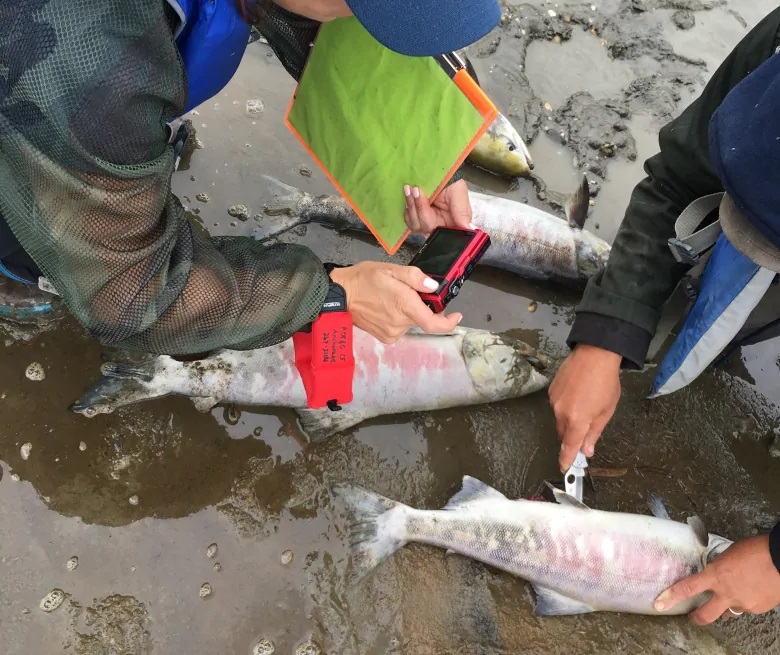
The circumpolar world, including Alaska, is on the forefront of climate change, Westley said, and “all predictions are that events like this are going to become more frequent and more severe.”
“We need to be ready to respond on the ground when this happens again in the future,” he said. “And it will happen again.”
Related stories from around the North:
Canada: Anglers allowed to catch chinook salmon in northwestern Canada, CBC News
Finland: Thousands of fish in Finnish lake dead from unknown cause, Yle News
Greenland: Greenland Atlantic salmon catch numbers well above new quota, CBC News
Norway: Is Norway’s farmed salmon as healthy as we think?, Radio Sweden
Russia: Authorities in northwest Russia move to protect wild reindeer, The Independent Barents Observer
Sweden: Poachers suspected behind dwindling wolf numbers in Sweden, Radio Sweden
United States: Unique freshwater Alaska seals require special conservation efforts, study finds, CBC News

